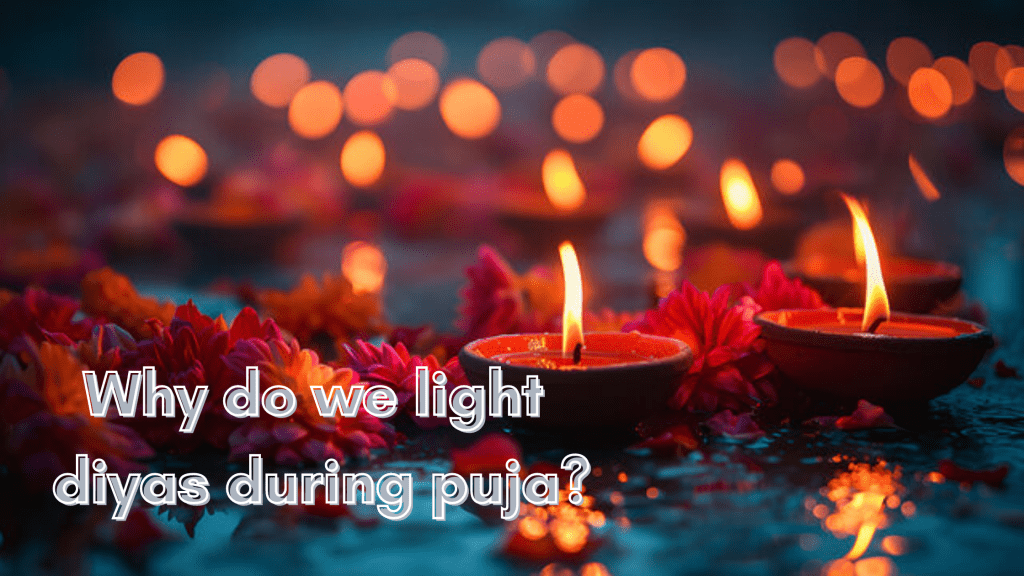Indian Festivals, Mystery and History
Why Do We Light Diyas During Puja?
Illuminate Your Puja Room: The Significance of Lighting Diyas.
Introduction
Don’t you feel the essence of peace when you light a diya at home? The Diyas play an important role in Hindu culture. In this blog let us understand the significance of lighting diyas.
When we think of traditional Hindu rituals and ceremonies, one of the first images that comes to mind is that of a diya. The flickering flame of a diya not only adds to the spiritual ambiance but also holds deep symbolic significance in various rituals, especially during puja.
The Tradition of Lighting Diyas During Puja
Why do we light diyas during puja?
The practice of lighting diyas during puja dates back centuries. In Hindu culture, lighting a diya symbolizes the presence of the divine. It is believed that the light from the diya dispels darkness, ignorance, and evil forces, paving the way for positivity and enlightenment.
Benefits of Lighting Diyas During Puja
- Creates a Sacred Atmosphere: Lighting diyas creates a serene and sacred ambiance, ideal for meditation and prayer.
- Symbolizes Enlightenment: The flame of the diya represents knowledge, wisdom, and spiritual awakening.
- Offers Devotion: Lighting a diya is a way of expressing devotion and surrender to the divine.
Types of Diyas for Puja
- Brass Diyas: Brass diyas are popular for their traditional and aesthetic appeal. They are durable and add a touch of elegance to your puja room.
- Electric Diyas: Electric diyas are a convenient option for those who prefer a hassle-free lighting solution. They are safe and easy to use.
- Hanging Diyas: Brass hanging diyas are perfect for hanging in doorways or temples. They are eye-catching and add a unique charm to your puja room.
- Mud Diyas: The most affordable form of diyas, nature-friendly and suits perfect for outdoor decoration. This diya for pooja provides the natural essence to your puja room.
How to Choose the Right Diya for Your Puja Room
- Consider the size and design that complements your puja room decor.
- Opt for high-quality materials like brass for durability and longevity.
- Choose between traditional oil diyas or modern electric ones based on your preference.
- If you are looking for big akhand jyoti diya, brass hanging diya for pooja room, diyas painting, or hanging electric diya for pooja room you can choose the perfect one from the vide verity of collection from PujaNPujari.
Conclusion
In conclusion, the tradition of lighting diyas during puja is not just a ritual but a way of connecting with the divine and seeking blessings. Whether you choose brass diyas, electric diyas, hanging diyas or mud diyas, the essence remains the same – to illuminate your space with positivity and spirituality.
Why do we light diyas during puja?
The answer lies in the time-honored practice of invoking light as a symbol of divine presence and enlightenment. So next time you perform a puja, remember to light a diya and bask in its glow of blessings.
Would you like to explore more about the significance of diyas in puja rituals? Feel free to delve deeper into the spiritual world by connecting with the experienced astrologers from PujaNPujari.

pnp_kumari.toolika
Digital Marketing Specialist


“Insightful article! Clear explanations on the significance of lighting diyas during puja. Well-written and informative, thank you!
This article beautifully explains the significance of lighting diyas during puja. The connection to tradition and spirituality is articulated so well. Thank you for enriching our understanding of this important ritual!
The topic of Kundli Milan sparks an interesting conversation about the role of astrology in our lives. I’m curious to hear others’ thoughts on its relevance in modern times.